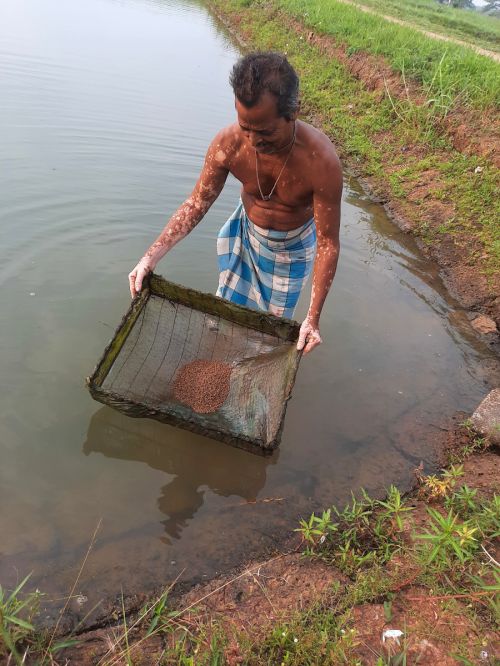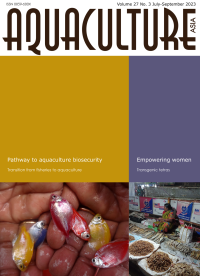Important considerations for feed and feeding management during Indian catfish culture
31 July 2023 | S.K. Sahoo, S. Ferosekhan, S.N. Sahoo, P.K. Tiwari, B. Mishra and S.S. Giri | 755 Downloads | .pdf | 3.95 MB | Freshwater finfish, India, Nutrition and feeding
Natural feeds present in ponds contribute to some extent to the nutrition of fish cultured therein. But these natural food stocks become insufficient as production intensity rises. In semi-intensive and intensive systems, nutritional inputs must be partly or wholly supplemented using external feeds to support higher growth and productivity.
Feed cost is always more than half of the production cost in catfish pond culture systems. Good quality feed is essential to achieve higher production. Poor quality feeds not only result in poor growth, but also cause deterioration of water quality due to rejection and poor biological utilisation. The selection of proper feedstuff and good formulation to meet the requirements of the cultured species will enhance acceptance and utilisation. Proper feed management is essential to reduce the production cost and achieve optimum growth for successful catfish culture.
This article discusses feed preparation, ration size, feeding rate, feed distribution and feeding schedules for culture of Indian catfishes.
Creative Commons Attribution.

